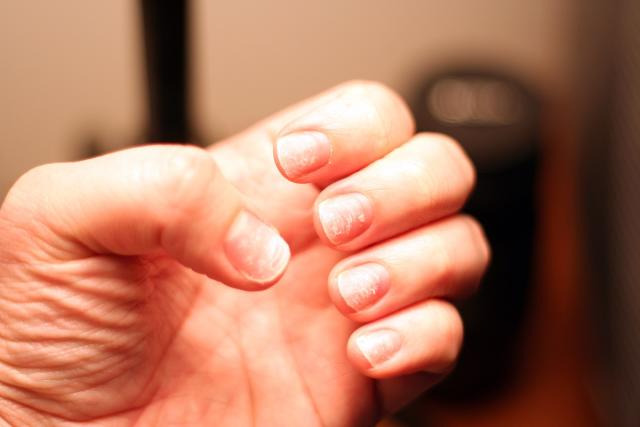When it comes to health and wellness, our bodies have a multitude of ways to signal when something is amiss. Our nails, for instance, can act as a window into our overall health. Just as a mechanic can assess the condition of a car by its exhaust, a trained eye can interpret the stories that nails tell about our body’s internal processes. While not all nail abnormalities are due to vitamin deficiencies, many can be traced back to them. Here's what to look out for and how to address it.

The Anatomy of a Nail
Before diving into the specifics of what our nails can reveal, it's essential to understand their structure. A nail comprises the nail plate (the hard part we see and cut), the nail bed (skin beneath the nail plate), the cuticle (skin at the base of the nail), the nail folds (skin folds framing each side of the nail), and the lunula (the half-moon shaped base of the nail).
The nail's appearance, strength, and growth can be influenced by various factors including diet, medications, traumas, infections, and underlying diseases.
Telltale Signs of Vitamin Deficiencies in Your Nails
White Spots: Zinc Deficiency
One of the most common misconceptions is that white spots on nails indicate a calcium deficiency. In reality, they are more frequently associated with a zinc deficiency. Zinc plays a vital role in DNA synthesis, immune function, and protein production.
Solution: Incorporate foods like legumes, nuts, whole grains, dairy, and eggs. If dietary changes don't show improvements, consider consulting a healthcare professional for supplements.
Brittle, Thin, or Split Nails: Biotin Deficiency
Biotin, or Vitamin B7, is crucial for converting food into energy. A deficiency can lead to brittle, thin, or splitting nails.
Solution: For stronger nails, consume more eggs, almonds, cauliflower, mushrooms, and spinach. Biotin supplements are also available but consult with a doctor before starting them.
Pale Nails: Iron Deficiency
If your nails look paler than usual, it could be a sign of anemia, often caused by iron deficiency. In severe cases, you may notice a concave or spoon-shaped depression in your nails.
Solution: Boost your iron intake by consuming red meat, spinach, legumes, pumpkin seeds, and quinoa. Again, iron supplements can help, but they should be taken under a doctor's guidance.
Ridges: Vitamin B12 Deficiency
Vertical ridges on nails can develop with age. However, severe and sudden ridge formation might indicate a Vitamin B12 deficiency. This vitamin is vital for nerve function and the formation of red blood cells.
Solution: Increase your intake of fish, poultry, meat, dairy, and eggs. For vegetarians and vegans, fortified cereals and plant-based milk can be beneficial.
Other Nutrient Deficiencies Reflected in Nails
Pitted Nails: Vitamin D Deficiency
Small dents or pits on the nail surface can be an indication of psoriasis, an inflammatory skin condition often linked to vitamin D deficiency.
Solution: Spend more time in sunlight, and include fatty fish, fortified dairy products, and mushrooms in your diet. Vitamin D supplements can be helpful, especially in areas with limited sunlight.
Brittle Nails with Dark Vertical Strips: Protein and Vitamin A Deficiencies
If your nails break easily and have dark, vertical strips, it might indicate a lack of protein and Vitamin A in your diet.
Solution: Incorporate lean meats, dairy, eggs, tofu, legumes, and nuts for protein. For Vitamin A, go for leafy greens, carrots, sweet potatoes, and bell peppers.
Preventing Vitamin Deficiencies Through Diet and Care
Balanced Diet: The Foundation of Healthy Nails
The best way to ensure nail health is by consuming a balanced diet rich in fruits, vegetables, whole grains, lean proteins, and healthy fats. Vitamins and minerals work synergistically, meaning the benefits of one can enhance or rely on the presence of another.
Regular Nail Maintenance
Keeping your nails clean and trimmed prevents infections, which can further exacerbate any deficiencies. Avoid excessive use of nail polish and removers that contain harsh chemicals.
Consultation
If you notice persistent nail changes, consult with a dermatologist or healthcare professional. While dietary tweaks can remedy many issues, it's essential to rule out other health concerns.
Your nails are more than just a canvas for beautiful colors; they're a reflection of your internal health. While it's easy to overlook subtle changes, being attentive to these can help you address potential vitamin and mineral deficiencies early on. By maintaining a balanced diet and staying vigilant about nail care, you can ensure both their health and your overall wellbeing.
